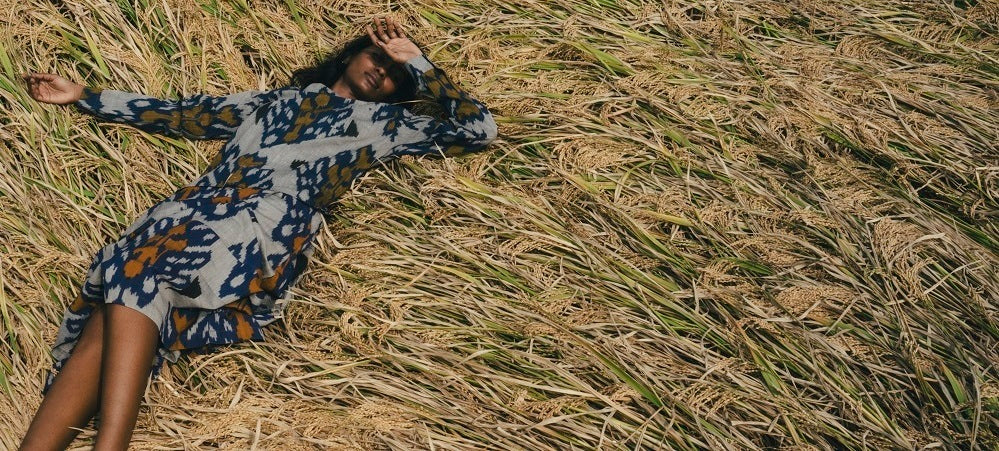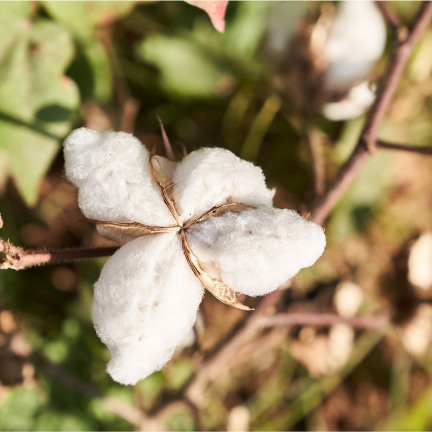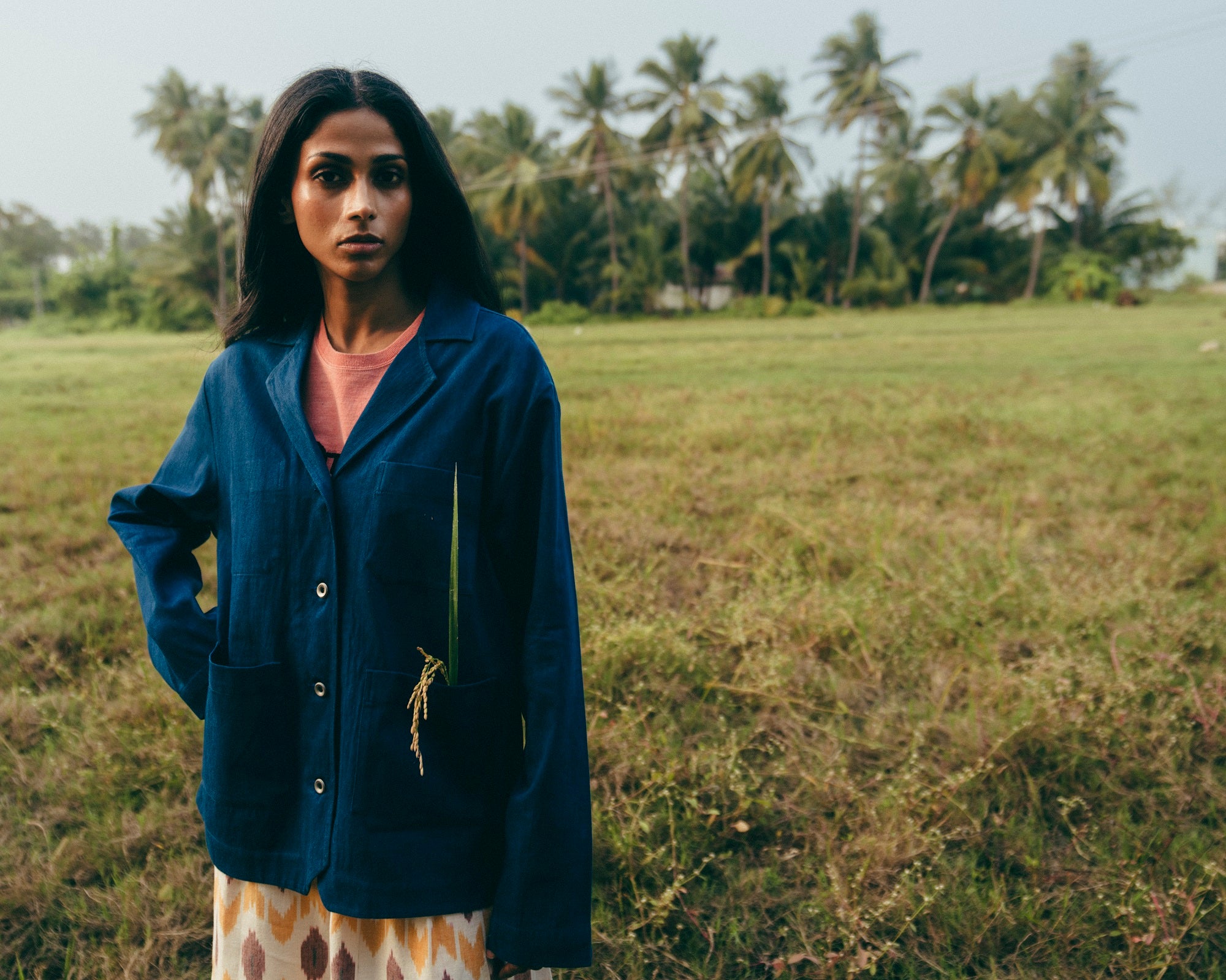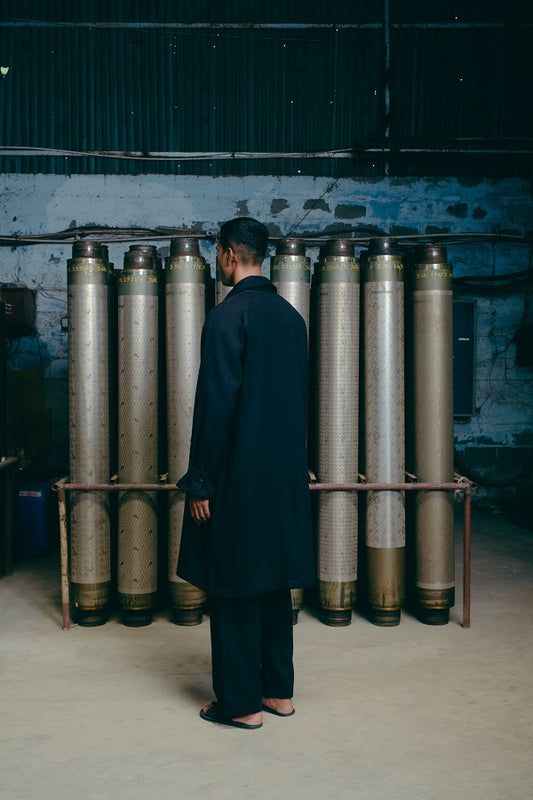Originally published in the Mindful Designer's Almanac, subscribe to the monthly newsletter here
In 2018, Nishanth Chopra traveled by train through his home state of Tamil Nadu and watchedMerku Thodarchi Malai (figure 1). The movie tells the story of farm laborers in the Western Ghats. It highlights the rise of industrial farming and the exploitation of landless farmers by farmland owners in Southern India. It made Nishanth, who had a collection of clothing and textiles made in Tamil Nadu using local artisans called Oshadi, think about how he could engage with farmers differently for Oshadi’s raw materials.

Figure 1: The cover of Merku Thodarchi Malai
Today, Oshadi manages over 250 acres of regenerative farmland and is navigating its largest cotton harvest yet (figure 2). In an industry where most processes are isolated from each other, Nishanth is unique in his passion for and experience in almost every aspect of a garment, from the soil to the finished product. For the last five years, he has connected farmers, spinners, weavers, printers, sewers, and brands to create Oshadi Collective.

This month, Nishanth and I chatted about his work, cotton farming in India, and what he has learned from his many partners in Oshadi Collective.
THE CONVERSATION
How did Oshadi Collective start?
We started Oshadi as a bridge between the traditional textile communities and modern consumers. We launched as a womenswear brand back in 2015. A couple of years later, other brands wanted to make textiles and garments with us. So we started the collective side of the business and began producing clothing with mindful, sustainable processes for them.
Around 2018, I watched Merku Thodarchi Malai and realized that there is a huge issue with agriculture in India. I thought there was a pretty straightforward solution to it- connect brands to farmers directly. That means the risk of the farmers could go down with brands taking part.
I proposed this idea to Rebecca Burgess from Fibershed (a non-profit focused on regional fiber systems) and she connected me to Christy Dawn (an LA-based womenswear brand). Our values aligned right away and we started this project with a 4-acre plot in 2019 (figure 3).

We have created a hybrid vertical integration where we manage growing, ginning, spinning, weaving, dyeing, and sewing regenerative cotton from the farms we work with and for the brands we partner with.
How did you grow your project? What were the most impactful decisions you made?
The whole bridging the gap between farmers and fashion brands was a new concept in fashion. The food industry was already doing it, but in fashion, it was new. With Covid and many different things happening at the same time, a lot of people started thinking about how to better their practices of making clothing. It was the right time to launch it. I don't mean that Covid came at the right time, but our project launched when a lot of things were not right around the world and that inspired a lot of people to take part in a solution.
Successfully working with brands is not just about the regenerative cotton, but a beautiful end product. So we make sure we take on brands that align not only on values of sustainability but also the values of design. Not many of the brands we work with are similar, but all are very good at what they do- making really beautiful clothing. I think that was an important factor, working with the right partners from the beginning.
We have also built an adaptable team (figure 4). There are so many things going on at once, we have to be very dynamic. We have a lot of people who started from scratch, it’s usually easier for them. We end up losing people who come in with a mindset from previous experience because they don’t understand our unconventional processes. For example, we are not doing 20,000 units of the same style, so they think there is a lack of efficiency.

For us, it’s not about constraining different people or resources. It is about doing the processes efficiently without having to exploit any people or environment. We work in harmony with anything that flows around our business or is interconnected with the company. At the same time, we can achieve the crazy deadlines that the demanding fashion supply chain requires. It’s all about finding the right people and balance.
What processes do you use on the farm where did you or the farmers learn them?
We are not necessarily following one principle. We are taking bits and pieces from many different amazing agricultural, permaculture, traditional, and biodynamic processes. A few months ago, we started working with the biodynamic calendar to guide us on when to sow seeds, add compost, and use natural sprays on the farm (Figure 5). We use five elements of cow which are curd, milk, ghee, urine, and dung for treatments on the farm. They are traditional recipes that local farmers taught us. We also did a lot of back-and-forth with you (I worked at Christy Dawn and helped develop its Farm-to-Closet program with Oshadi) from your agricultural knowledge from the US.

Figure 5: Tamil Agricultural calendar. Learn more here.
For everything we do on the farm, we test, streamline, and carry on with things that work and leave behind things that don’t. It's a process. I have seen so many agricultural processes in the past few years. None of them have a formula that works perfectly. Everything is evolving, everyone is trying new things. In farming, we are working with one of the most variable factors- the environment and climate. It's all probability and predicting what might happen. It’s about making the best calculated decisions we can, you can’t be 100% right. But we can make them so that the farmers, the brands, and we don’t lose money or have a bad harvest in the process.
As long as those things happen, I think the project can work. But not necessarily be highly profitable. I would be really surprised if I met someone truly doing regenerative agriculture and making a huge profit. If we wished to make a big profit off the agricultural side, someone down the supply chain, whether it’s the farmers, the makers, the brands, or us would be affected. Someone has to be affected.
How is the farm program set up financially with brands?
The brands take part. They invest and cover all the cost of agriculture and if something goes wrong, they share the risk. People who are usually working with high-risk (farmers) are brought down to low-risk and people who usually have no risk (brands) come up to a low-risk level. It brings everyone to a similar level.
We work backward with brands, we figure out what fabric and how many meters they want, how much yarn they need, how much cotton for the yarn, and then how many acres of land they require. It takes six months to grow the cotton, and then all the cotton from each brand’s respective portion goes into their fabrics and garments.
We cannot limit our clients to making just a few specific fabrics. It is really important to be able to make any count of yarn, any weave, and any fabric. Investing in the farm so far in advance is a huge commitment. They should be able to make anything they want or desire from the cotton they invested in.
We have a collaborative relationship with the brands, not just farmers. We understand what brands need and establish and mold supply chains based on what is required. Throughout the years, we have developed strong relationships with some of the best craftspeople (figure 6).
For example, if it's hand-woven, we work with a big community of talented hand weavers. If it is machine woven, then we work with weavers that use Japanese and German looms. With block printing, we have tested and trialed so many block printers. We figured out which natural dyes each printer works best with and we just work with them in those colors. We make everything from the thickest fabric at 800 gsm to the finest fabric at 50 gsm. In most textile mills, you go in and easily figure out what they do, they just make denim or t-shirts. Usually, brands are either amazed they can do everything they want in one place or very overwhelmed by the possibilities.
What project or craft you have worked with that you hope more brands will invest in?
I think everything we do is incredibly beautiful. I would not side with anything specifically. I think what drives our company is there is a dynamic nature of working with so many amazing people and projects. We work with Rabari quilters in Kutch, block printers in Rajasthan, hand embroiders from Lucknow, and the best hand weavers here in Tamil Nadu (figure 6). We are fortunate to have this community of people working with us.

Of course, I wish brands invested more in the handmade processes. Our production is at a place where we can’t hand make everything. But we can definitely embed one handmade process into each piece we produce. It could be hand embroidery, a block print, natural dye, kantha, or something else that involves doing things by hand. I think just having one element that is very human in every garment is beautiful. I think if every brand just added just one handmade thing that could really revive all these diminishing skills. Or even better, bring these communities more consistent work or into the limelight. We could not just revive, but grow these communities.
Learn more about Oshadi’s work with brands here
Shop Oshadi’s newest garment collection here
Shop Christy Dawn’s Farm-to-Closet collection here












